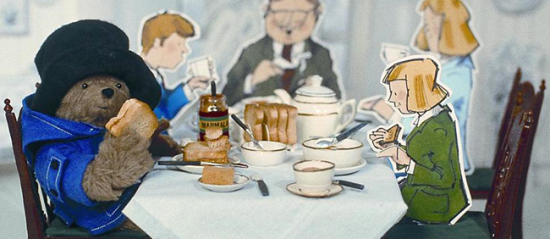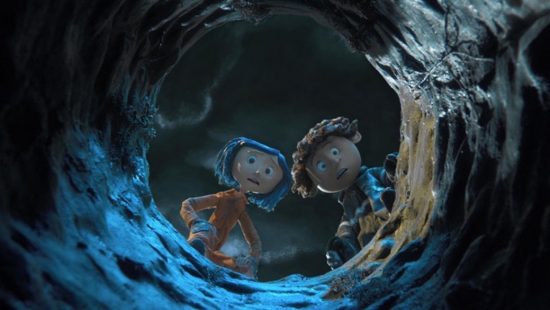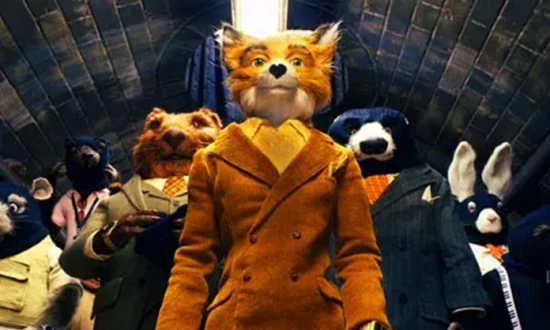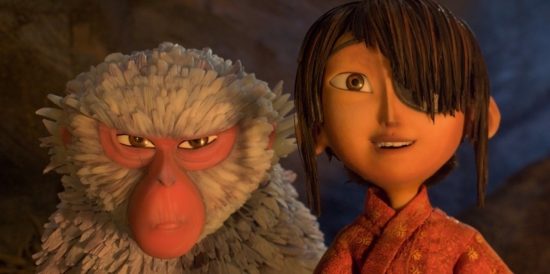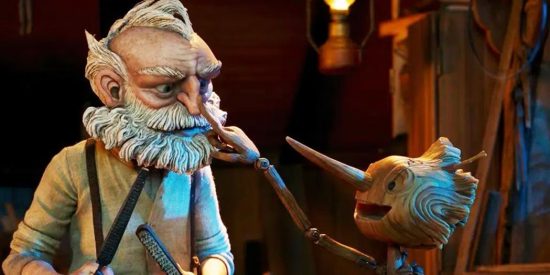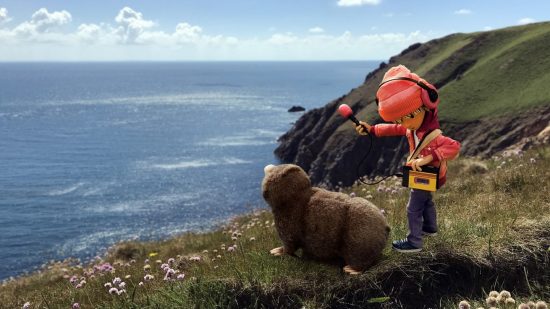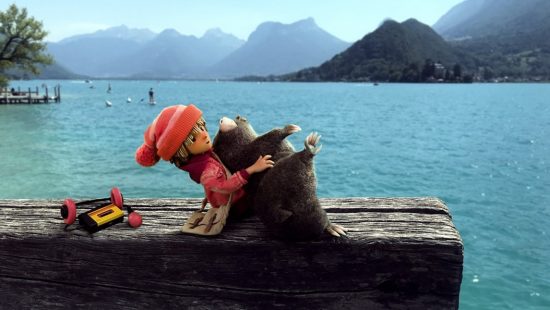The Best Stop-Motion Film and TV Shows
A highly skilled filmmaking technique, stop-motion animation really took off in the 1950s with Ray Harryhausen’s unforgettable FX in a series of super successful fantasy films, which continued well into the 1980s.
In stop-motion animation, objects, often puppets, are physically manipulated in tiny increments which are then captured in a still photograph. Moving the puppet for the next photo, the result creates a string of single frame images that appear to move when played back-to-back.
To celebrate ITVBe’s The Sound Collector, created and produced by Eagle Vs Bat, we take a look at some of the very best stop-motion film and television shows.
Clangers (1969–2020)
Focusing on a family of loveable pink mouse-like creatures, who live on a small planet, the Clangers were originally broadcast on BBC1 between 1969 and 1972.
Picked up again in 2015 and running until 2020, the new seasons used a lot of the same traditional stop-motion animation techniques as the show’s original creators Oliver Postgate (writer, animator and narrator) and Peter Firmin (model-maker and illustrator) and as a result, retained all its magic.
The original Clangers were knitted by Firmin’s wife Joan, and the custom continued with all puppets hand-made by specialist knitters, and everyday materials were used to create the Clangers’ set. In total, over three kilometres of wool were used to knit the Clangers Family and over 300 cotton wool balls used to make up some of the set, including the beautiful trees.
With The Sound Collector’s series director Chris Tichborne and head writer Dave Ingham at the helm of the BBC comeback, great storytelling was guaranteed to remain at the core of the show. With episodes centring on problem solving, inventing and discovering and making new friends – the stories had universal themes of care and community, choosing to encourage and nurture a sense of wonder and natural curiosity in the show’s young viewers.
Made by Manchester-based stop-motion animation specialists Factory Transmedia and award-winning puppet makers, and The Sound Collector alumni, Mackinnon and Saunders Ltd, around 11 seconds of animation were produced every day, and a full episode of animation took roughly around 9.5 days to complete.
Paddington (1976-1986)
Based upon the Paddington Bear novels by Michael Bond, the Paddington TV show was the first adaptation of the popular children’s book and was broadcast from 1976 to 1980 on BBC1, with three television specials appearing between 1980 and 1986.
The show revolved around the adventures an accident-prone but well-meaning bear from Darkest Peru and the Browns; the loving family that took him in after discovering him in London’s Paddington train station.
The show was unusual in that it combined a wonderful three-dimensional Paddington puppet with two-dimensional paper cut-out backgrounds and characters, predominantly in black and white, giving the show a very distinctive style. This style was masterminded by animator Ivor Wood, famous for The Magic Roundabout and Postman Pat, to eliminate the need for lots of puppets in the crowded London scenes. Additionally, as an aesthetic choice it immediately positioned Paddington as the outsider, helping audiences to sympathise with his endless mistakes and mishaps.
Created by FilmFair, the British production company and animation studio responsible for many popular children’s shows including The Wombles, the first series ran for 30 5-min episodes under the direction of Wood, with the second series winning a silver medal at the New York Film and Television Festival in 1980, the first British animated series to ever do so.
All 56 episodes across the two series were written by Michael Bond and narrated using the wonderfully distinctive voice of Sir Michael Hordern.
Morph (1977)
One of the first creations of Peter Lord and David Sproxton as part of their newly formed Aardman Animation studio, Morph initially appeared in the 1977 children’s programme Take Hart alongside British artist Tony Hart. A small terracotta-coloured figure who spoke an incomprehensible language, Morph could change shape at will and would regularly get into mischief.
Taking up residence in a wooden art box, Morph’s segments often involved him creating artwork, stumbling upon mysterious keepsakes and generally getting himself in a bit of muddle. Although Morph never spoke, the purity of the animation and direction meant that his thoughts were always clear through his body language.
Standing just 12cm tall and weighing 5 ½ oz, Morph was always hand-made out of a single lump of clay and soon became a regular fixture on children’s television in the 70s and 80s. Almost 40 years after his debut, Morph made a successful comeback in 2013 after a popular crowd-funding campaign.
The Trap Door (1986–1990)
Somewhere in the dark and nasty regions where nobody goes stands an ancient castle. Deep within this dank and uninviting place lives Berk, overworked servant of The Thing Upstairs. But that’s nothing compared to the horrors that lurk beneath the trap door. For there is always something down there, in the dark, waiting to come out…
Created by British animators Charlie Mills and Terry Brain, who together were known as ‘Brainbox Mills’, The Trapdoor was first shown in the UK in 1986 – a golden age for all manner of weird and wonderful monsters on Children’s TV!
Revolving around the daily antics of a band of monsters living in a Haunted Castle, owned by an unseen, cantankerous creature known only as the Thing Upstairs, the show’s main protagonist is the overworked Berk, who spends his time hanging out with his disembodied skull companion Boni, doing his master’s bidding and trying to the keep the real horrors underneath the eponymous trapdoor at bay.
Inhabited by monsters of every imaginable shape and size, the horror-inspired world of The Trap Door allowed the Bristol-based CMTB to create an endless array fantastical characters and disgusting recipes (eyeball jam anyone?) to delight the children, while its dark humour kept the adults entertained. Even the catchy opening theme began with a lampoon of Vincent Price’s famous horror film introductions.
With a vibrant, hands-on approach to all their work, CMTB didn’t overly concern themselves about how polished the final episodes looked, instead choosing to place flexibility and performance above neatness and perfection – resulting in a spontaneous liveliness to the series.
Later responsible for another Claymation classic Stoppit and Tidyup just a few years later, Terry Brain then went on to work for Aardman Animation where he worked on the Wallace and Gromit films, as well as Chicken Run, Shaun the Sheep Movie and the animated TV show Creature Comforts.
Wallace and Gromit (1989–present)
From starting as a concept in Nick Park’s sketchbook, Wallace and Gromit has grown to become a staple of British afternoon television. Aardman Animation’s stop-motion comedy franchise so far consists of four short films – A Grand Day Out, The Wrong Trousers, A Close Shave and A Matter of Loaf and Death – and one feature film Wallace & Gromit: The Curse of the Were-Rabbit.
Centering on the good-natured Wallace, a cheese-loving inventor, and his pal Gromit, a highly intelligent beagle, each Wallace and Gromit outing has impressively gone on to either win or be nominated for a prestigious Academy Award.
Shot using the traditional stop-motion animation technique, pre-production of the films began with highly detailed storyboarding alongside set and plasticine model construction. Shooting the films one frame at a time, the characters were moved in minuscule increments to give the impression of movement in the final film. Sadly, most models from all Aardman productions were destroyed in a fire in 2005.
Peter Sallis, another stalwart of British television, with his performance as Cleggy in the BBC’s Last of the Summer Wine, lent his voice to the character of Wallace, with Benjamin Whitehead taking on responsibilities after Sallis retired from the role in 2010.
In January 2022, the exciting news of a new Wallace and Gromit film was announced.
Coraline (2009)
Based on Neil Gaiman’s novella of the same name, Coraline was the first feature film released by Portland’s LAIKA studio in 2009. Featuring the voice talents of Dakota Fanning, Teri Hatcher, Jennifer Saunders, Dawn French and Ian McShane among others, the film depicts an adventurous young girl finding an idealised parallel universe behind a secret door in her new home – unaware that the parallel universe contains a dark and sinister secret.
Staged in a 140,000-square-foot warehouse in Oregon, the production played host to nearly 150 sets and took more than 500 people over four years to complete. Principle photography alone took 18 months!
With Coraline, LAIKA fused both old and new techniques, using 3D printing systems to create 1000s of high-quality 3D models – from facial expressions to doorknobs – while the puppets typically took 10 people about 3-4 months create. Overall, Coraline had 28 identical puppets, the main one of which stood at 9-3/4 inches tall, while a total of 15,000 replacement faces were created for all the characters in the film, each of which had to be hand-sanded and hand-painted! Coraline alone had over 6,300 face replacements.
At its peak, the film involved a total of 35 animators, with The Sound Collector’s Chris Tichborne among them, each animator completed anywhere from 2.22 to 6.52 seconds of footage per week!
Coraline established LAIKA as a player in the animation world, proving that its filmmakers’ lovingly handmade aesthetic could flourish in a world dominated by Woody, Kung-Fu Panda and Shrek.
Fantastic Mr. Fox (2009)
This 2009 release signalled Wes Anderson’s first full foray into feature film animation. Based upon the classic children’s novel by Roald Dahl, the film boasts an incredible cast of superstar voices; George Clooney; Meryl Streep; Bill Murray; Willem Dafoe; Jason Schwartzman and Anderson regular Owen Wilson.
To bring his vision to life, Anderson called upon some of the very best names in the puppet-making business – The Sound Collector’s very own, Mackinnon and Saunders. Basing their puppets on beautifully detailed drawings by Félicie Haymoz, Mackinnon and Saunders began fleshing out the character designs into three dimensions using plasticine clay and steel frameworks which were approximately 12 inches tall.
It was clear during pre-production that Anderson didn’t want the film to look polished. Instead, he wanted viewers to embrace the hand-made medium of stop-motion – which only served to compliment Dahl’s darkly-humorous work further. Anderson injects a sense of homemade delight into every aspect of the film, making it all seem endearingly cobbled together when of course it was painstakingly made over the course of several years.
The foxes bristle with exposed fur and the charming world is permeated with authentic texture – Anderson’s meticulous, attention to detail is a perfect fit for an art form that demands such patience and care.
Kubo and the Two Strings (2016)
Another entry by LAIKA Studios, Kubo and the Two Strings tells the tale of Kubo and his magic shamisen (a Japanese stringed instrument) unwittingly summon vengeful spirits who wish to harm him and his ailing mother. While on the run, he encounters magical creatures, and learns the truth of his earthly family’s connection to the heaven and stars.
Taking inspiration from traditional Japanese media and art forms such as ink wash painting, Noh theatre and origami. A notable influence came from the ukiyo-e woodblock style with LAIKA aspiring to have the entire film look and feel as if it’s a moving woodblock print.
Made on a 12ft long tabletop, LAIKA continued to create a fusion of techniques, using CGI, 3D printing and stop-motion in order to bring their vision to life.
Using CGI to bring greater flexibility and precision to the production, LAIKA also used computers to fill in or extend backgrounds, add extras to crowd scenes or paint out wires, but everything, of course, starts with the puppets. For example, for the Skeleton monster the team created a giant puppet that stood a whopping 18 feet (5.5 meters) tall, with a wingspan of 23 feet (7 meters). At over 400 lb its thought to be the largest stop-motion puppet ever built. Essentially a marionette, the puppet had cables attached to its wrists and car brake pads at the elbows.
As a result of all this meticulous work and state-of-the-art artistry, Kubo and the Two Strings was nominated for best animated feature and received a notable second nomination for visual effects in the 2017 Academy Awards.
Guillermo del Toro’s Pinocchio (2022)
Acclaimed director Guillermo del Toro once said, “No art form has influenced my life and my work more than animation and no single character in history has had as deep of a personal connection to me as Pinocchio,” and with his 2022 film winning Best Animated Film at the 2023 Academy Awards, it’s a testament to Del Toro’s brilliance and creativity that this oft-told tale can still bring about excitement among audiences.
Starting in development over 15 years ago, Del Toro had always envisioned the film as a stop-motion production. He also knew that key members of the cast had to be built by The Sound Collector’s very own Mackinnon and Saunders. Describing them as “the best in the world,” Mackinnon and Saunders are renowned not only for their expertise, but also for constantly pushing the boundaries of stop-motion animation.
Using the same mechanical gear system they invented for Tim Burton’s Corpse Bride, the mechanisms inside the puppets head would allow the animators to adjust the gears between frames to move the silicone skin, enabling the animator to create nuances and subtle expressions.
Achieving its lifelike stop-motion by mixing old and modern techniques, the title character was built via metal and resin 3-D printing but it’s fitting that the tradition of stop-motion animation would be utilised to tell the famous story of a wooden boy that comes to life.
The Sound Collector (2023)
A masterful mix of live-action and stop-frame animation, The Sound Collector is the brainchild of creators/showrunners Erica (formerly Darby) & Tom Angell of Eagle Vs Bat. Airing daily on ITVBe and streaming on ITX, the show is narrated by Keira Knightley in her first-ever pre-school children’s programme.
The Sound Collector spends his days discovering and using new sounds that he finds on his adventures: the blooping and popping of sea anemones, the hissing of the tide drawing back along a pebble beach or even the snores and snuffles of his best friend and pet, Mole. He is endlessly fascinated by the world around him and whether he loves sound because of, or despite the fact that he is very hard of hearing, it is the focus of his life in an incredibly positive way.
Eagle Vs Bat chose stop-motion animation for the show as they believe it’s tactility and handmade detail is the perfect match for the show’s macro focus on sound, inspiring audiences to seek joy and wonderment in the little things and gaining a new appreciation for the world around them, from the littlest insect to the tallest tree!
The stop motion animation is brought to us by the creative minds at Mackinnon & Saunders Ltd. Based in Manchester, Ian MacKinnon and Peter Saunders first teamed up 35 years ago at UK stop frame giant Cosgrove Hall and have since worked on a huge range of TV shows, feature films and everything else in-between. They pioneered new techniques in puppet making on productions such as the BAFTA-winning The Reluctant Dragon and Emmy Award-winning The Fool of the World and their puppet-making skills are renowned throughout the world.
The Sound Collector is a beautiful, heart-warming series that is already becoming a favourite among households.
Make sure to catch up on the wonderful adventures of The Sound Collector and his best friend Mole – available to stream on ITVX, Sky, Virgin, Apple TV & Amazon.


